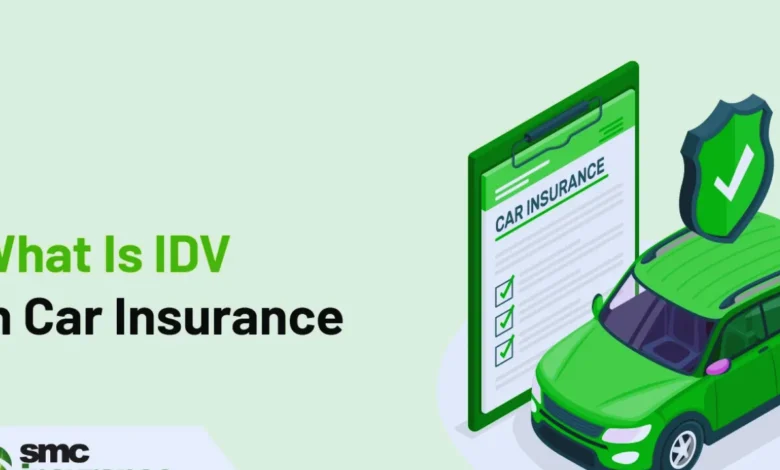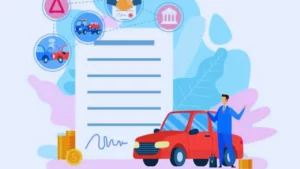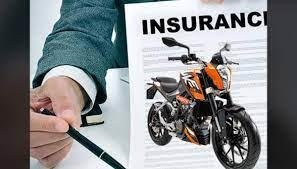What does IDV mean in Insurance, and What Use Does It Have

Most people focus on premium amounts and types of coverage when getting an insurance policy or renewing one, but they just ignore such terms as IDV. Later, they would curse their fate for it. What is IDV in insurance, and why do we see it on every policy quote? The answer is in the valuation of your vehicle done by your insurer and how much money the insurer would pay you if something untoward were to happen, like theft or vehicle destruction.
IDV, or Insured Declared Value, is far from just a generic number- it is what the insurer reckons the car or bike is worth as of now. This figure becomes the maximum amount payable by the insurer in case of a total loss. If you understand the value, you will find it easier to make decisions related to your policy, for instance, insuring a brand-new SUV or renewing a three-year-old scooter. From here, I will explain the complete meaning of IDV, how it is calculated, how it affects premiums and payouts, and why deciding on the right IDV is more significant than you may think.
IDV Meaning in Insurance Terms

IDV, which stands for Insured Declared Value, is the most important term in vehicle insurance that signifies the value of your car on the market. It is the maximum amount an insurer is willing to pay if your car is stolen or has been damaged beyond repair after a car accident. IDV is not the same as the original purchase price; however, it represents the depreciated value taking into consideration the age of the car, the condition, and market trends. This figure is agreed upon when buying the policy and at its renewal time to make sure the coverage is fair. The IDV is directly related to the premium; if the IDV is high, the premium will be high, and if it is low, the premium will be lower.
It makes it easier for both the insurer and insured to understand the claim process. Informed decisions about IDV prevent the situation of being underinsured or overpaying. The insurers set the IDV based on the depreciation that is expected over the year. Constantly check if the IDV your insurer provides corresponds to the actual price of your car. The right IDV level assures you that you are financially covered without having to pay extra for your policy.
IDV Calculation for Vehicle Insurance
Below is a reference showing how IDV is typically calculated based on the vehicle’s age and depreciation:
| Vehicle Age | % Depreciation Applied | IDV (%) of Ex-Showroom Price |
| Less than 6 months | 5% | 95% |
| 6 months to 1 year | 15% | 85% |
| 1 to 2 years | 20% | 80% |
| 2 to 3 years | 30% | 70% |
| 3 to 4 years | 40% | 60% |
| 4 to 5 years | 50% | 50% |
| Above 5 years | Mutually decided | Based on the insurer’s discretion |
Why Is IDV Important in Insurance Policies?

Premium Calculation: In cases of theft or total damage, a higher IDV will attract a higher premium, and a lower IDV would mean a lower premium, but at the risk of lower claim settlements.
Claim Settlement: The insurer may pay you in full or part up to the IDV value in case of theft or total damage of the insured vehicle.
Making a Choice on Coverages: The IDV specifies the worth of coverage one is purchasing for their asset.
How to Choose the Right IDV for Your Vehicle
Choosing an Insured Declared Value (IDV) that is most suitable for you can be a tricky task. It means you have to make sure you get adequate protection without paying for insurance that is too expensive. A good starting point would be to find out the current market value of your car, which is the base for the IDV calculation. Now, see at the vehicle’s age, condition, and any changes that might make it more valuable. The IDV should not be set too low, as that will only mean that your claim amount will be reduced in case of total loss or theft. On the other hand, a higher IDV than necessary will result in you paying more for your premium.
Go through the depreciation rates that the insurers have given to your vehicle, depending on its age, to understand the effect on the IDV. It is also a good idea to get IDV quotes from different insurers for your vehicle and then compare them. Apart from this, think about how big a risk you can take and your available budget. If you talk to your insurer or a trusted agent, they can help you design the IDV that suits your needs. In the end, fair coverage and affordable premiums are the elements that form the to selecting the right IDV.
Can IDV Be Negotiated in Insurance?
Let us now discuss whether or not IDV can be negotiated. IDV amounts are usually negotiable within permissible ranges set by the company. The policyholder may then opt to increase or decrease it depending upon the nature of what he wants to carry and what he can bear at the particular moment. The higher the IDV means the higher the claim payout, somewhat aggravating the premium and vice versa: keeping it low somehow disgraces the victorious claimant by way of reducing compensation and simultaneously reducing the premium, especially.
Does IDV Apply to Motor Insurance of All Types?
IDV remains applicable through motor insurance and own damage standalone policies. Third-party insurance, however, is not concerned with IDV since it merely establishes liabilities against other persons. Under a thorough policy, IDV is targeted at compensating the insurer from a total loss or theft intent. It is a very important coverage mechanism for owners of cars and two-wheelers seeking the fullest protection. Hence, IDV is not applicable under all variants of the motor insurance but is an integral part wherever own-vehicle damages are included in the cover.
What Happens to IDV During Insurance Renewal?
Usually, the IDV is changed to reflect the current market value of your vehicle and its age when you renew your vehicle insurance. To compensate for the decrease in value, insurance companies use depreciation to adjust the IDV value downward each year, which is usually about 10–20%, depending on the age of the vehicle. This implies that the value of the car is going to decrease as the vehicle gets older, a nd it is reflected through IDV, which thus leads to a smaller premium. But a lower IDV will give you less money back if you want to claim it, for example, if your car is stolen or is a total loss due to an accident.
Most insurers suggest a default IDV value when you renew, but you can also change it to a value within the permissible range if you want. A slight increase in IDV can act as a better financial security, especially if the vehicle condition is very good. According to some insurers, you can set a car value that is higher than the agreed one and consequently pay a higher premium. The IDV that is going to be given to you should not only be the basis of your decision, but also the resale value and the condition of your vehicle should be considered.
Effect of IDV on Total Loss and Theft Claims
The Insured Declared Value (IDV) serves a very important role when the vehicle is stolen or if it undergoes total loss. In such cases, the insurer pays the highest compensation to the insured as per the IDV. The higher the IDV, the better the compensation comes to you; a lower IDV means that you are at a disadvantage. It directly affects the amount of money you get back in case of high-value losses. So, choosing the right IDV is important for financial cover in case of unfortunate incidents.
Can IDV Differ From Insurer to Insurer?
Yes, IDV can differ from insurer to insurer even for a single vehicle. This mostly happens because different insurers may give slight changes to depreciation from each other and provide some level of flexibility within a standard range. Some may offer high IDVs at high premiums, whereas others would advise the IDV on the lower side to keep premiums cheap. You need to compare and see which one gives you a balance of value and protection. A wise choice helps you keep away surprises during claims.
Wrapping up
At first glance, IDV might seem just another technical jargon in your motor insurance policy, but it is the major factor that makes sure that your car is adequately covered. If you are driving a brand new sedan car or an old bike for commuting, selecting the right IDV can be the difference between receiving a fair claim amount and facing a financial loss. A lot of people unknowingly end up deciding on a lower IDV just to reduce their premiums; however, this will result in a negative reaction when they have to make a claim.
Rather than following the IDV recommended by the insurer, you can spend a couple of minutes going through it and changing it so that it is by the current market price of your vehicle. This one simple action can be a big source of comfort, knowing that you are neither underinsured nor overcharged. In a world where things are changing rapidly and accidents and thefts are quite usual, IDV is like your safety net that protects your investment and assures your journey ahead.
FAQs
What is IDV in insurance for a car or bike?
IDV, which is an acronym for Insured Declared Value, is the amount the insurer agrees to pay if your vehicle is completely damaged or stolen during the period of insurance. It represents the current market value of your vehicle and is the basis for setting the premium in your policy and claim settlement.
Does a higher IDV mean a higher insurance claim?
Indeed. If your car is stolen or damaged to the extent of being beyond repair, then the insurer will pay you an amount equivalent to the IDV sum. The higher the IDV the better the compensation you will get, however, on the other hand, you should expect a slightly higher premium cost.
Can I choose my own IDV in vehicle insurance?
Customarily, insurers provide a wide range of values from which one can select. You are entitled to modify your IDV within that range. But still, it needs to be the true market value of the vehicle, else the claim may be rejected.
Is IDV relevant for third-party insurance?
Absolutely not, IDV has no connection with third-party insurance. It is only of importance in thorough plans that cover the repair of your vehicle, along with any liabilities to third parties.
How often does IDV change?
At the very least, the IDV decreases annually because of vehicle depreciation. When the policy is renewed, the insurer reevaluates it by taking into account the age of your car or bike and the rate of depreciation.





